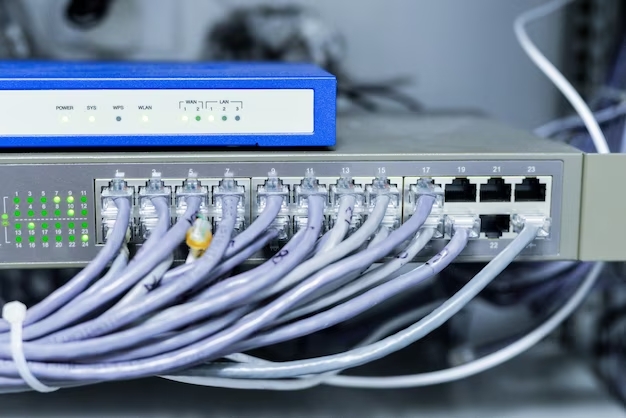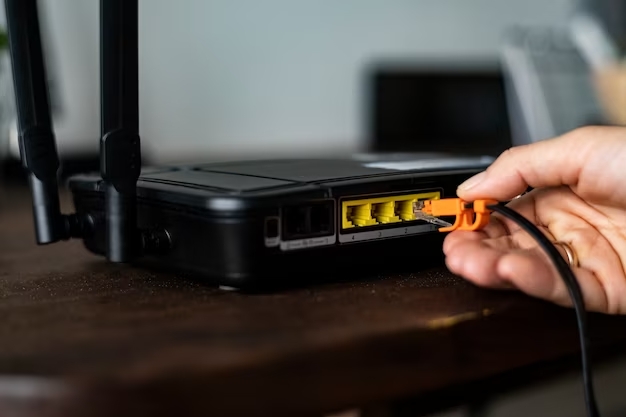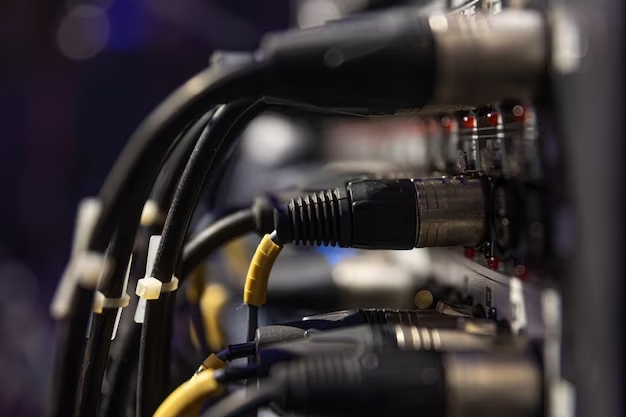Introduction
The HD coax modulators have cutting-edge technology for high-definition video distribution. This comprehensive guide covers everything you need to know about HD coax modulators, from functionality and benefits to setup and troubleshooting. Get ready to revolutionize your video distribution system! In today’s fast-paced world, high-definition video content is in high demand. Whether you are a business owner, a content creator, or a tech enthusiast, ensuring seamless distribution of high-quality video is crucial. This is where HD coax modulators come into play.
HD coax modulators are innovative devices that allow you to distribute high-definition video signals over existing coaxial cable infrastructure. With their user-friendly setup and cost-effective approach, these modulators have become video distribution game-changers. This comprehensive guide will delve into every aspect of HD coax modulators, exploring their functionality, installation, benefits, and more. So, let’s dive in and unlock the full potential of HD coax modulators.
HD Coax Modulator: Understanding the Basics

Before we dive into the nitty-gritty of HD coax modulators, let’s start by understanding the basics.
What is an HD Coax Modulator?
An HD coax modulator is a device that takes an input video signal, typically in high-definition (HD) format, and converts it into a digital RF (Radio Frequency) signal. A common coaxial cable system, such as the one used for cable television, can then distribute this RF signal. Any TV or digital display with a suitable tuner can receive and decode the modulated signal.
How Does an HD Coax Modulator Work?
HD coax modulators convert the digital video signal from HDMI or other sources into a specific RF frequency. This frequency is combined with other RF signals and sent to multiple televisions or displays through a coaxial cable. Each television can tune to the assigned RF channel to access the video content in high-definition.
The Advantages of HD Coax Modulators

Now that we understand what HD coax modulators are and how they function let’s explore their numerous advantages.
1. Cost-Effective Video Distribution
HD coax modulators eliminate the need for costly individual cables for each display or television. By leveraging existing coaxial infrastructure, businesses and homeowners can save significantly on installation costs.
2. Seamless Integration with Existing Systems
One of the most significant advantages of HD coax modulators is their compatibility with existing cable TV systems. Integrating HD modulators into your current setup is a breeze, allowing you to maximize your investment.
3. High-Quality Video Distribution
HD coax modulators ensure the video content is delivered in true high-definition quality. There is no loss of signal or quality degradation, guaranteeing an excellent viewing experience for your audience.
4. Scalability and Flexibility
Whether you want to distribute video content to one additional television or several displays across multiple locations, HD coax modulators offer scalability and flexibility. You can easily expand your video distribution system as needed.
5. User-Friendly Setup and Operation
Setting up an HD coax modulator is straightforward and does not require advanced technical knowledge. Most modulators come with intuitive interfaces and controls for easy configuration.
Read More ON: HD Coax Modulator: A Comprehensive Guide to High-Definition Video Distribution
Exploring the Different Types of HD Coax Modulators

HD coax modulators come in various types, each designed to cater to specific needs and requirements. Let’s take a closer look at the different types available in the market.
1. Single-Channel HD Coax Modulators
As the name suggests, single-channel HD coax modulators allow you to distribute content to one television or display. These are ideal for small-scale installations or scenarios where you must distribute video to a single location.
Multi-Channel HD Coax Modulators
Multi-channel HD coax modulators are designed to distribute content to multiple televisions or displays simultaneously. They offer greater flexibility and are suitable for larger setups such as hotels, sports bars, and commercial establishments.
2. Rack-Mountable HD Coax Modulators
Rack-mountable HD coax modulators are built for professional installations where space optimization is essential. These modulators can be easily mounted in equipment racks, making them an excellent choice for broadcasting and headend systems.
3. Network-Enabled HD Coax Modulators
Network-enabled HD coax modulators have built-in Ethernet ports, allowing you to stream video content over IP networks. This opens up possibilities for remote management and content delivery over the Internet.
Also, Read This: HD Coax Modulator: A Comprehensive Guide to High-Definition Video Distribution
Setting Up Your HD Coax Modulator
Now that you understand HD coax modulators and their different types, it’s time to set up your modulator for seamless video distribution.
1. Gather the Necessary Equipment
Before you start the installation process, ensure you have all the required equipment, including the HD coax modulator, coaxial cables, HDMI cables, and a compatible television or display.
2. Connect the Modulator to the Video Source
Using an HDMI cable, connect the video source (e.g., a media player or camera) to the input port of the HD coax modulator. Ensure a secure connection to avoid signal loss.
3. Connect the Modulator to the Television/Display
Take a coaxial cable and connect one end to the output port of the HD coax modulator. Connect the other end to the RF input of the television or display.
4. Power Up the Modulator
Plug in the power adapter of the HD coax modulator and switch it on. You should see the indicator lights showing the device is powered and ready for operation.
5. Tune the Television/Display to the Modulated Channel
Tune to the specific RF channel assigned to the modulator using the television’s remote control. You should now see the video content playing in high definition.
Troubleshooting Common Issues with HD Coax Modulators
Despite their user-friendly setup, you may need help using HD coax modulators. Here are some common problems and their solutions.
Issue 1: No Video Signal on the Television
Solution:
- Make sure that each cable connection is secure by checking it out.
- Check to see if the modulator has power and is sending a signal.
- If the problem continues, try switching to a different HDMI cable or television.
Issue 2: Poor Video Quality
Solution: Poor video quality can result from interference or weak RF signals. Make sure there are no sources of electromagnetic interference near the coaxial cables. You can also adjust the RF output power of the modulator to improve signal strength.
Issue 3: Remote Control Interference
Solution: If you notice that the remote control for the television is not working correctly, it might be due to interference from the modulator’s RF signal. Try repositioning the modulator or using an IR (Infrared) extender.
FAQs
Q: How many televisions can I connect to a single HD coax modulator?
A: The number of televisions you can connect depends on the type of HD coax modulator. Single-channel modulators support one television, while multi-channel modulators can connect to multiple televisions, typically ranging from 4 to 16.
Q: Can I use HD coax modulators for residential and commercial applications?
A: HD coax modulators can be utilized in residential and business settings, proving their versatility. HD coax modulators can meet your needs whether you want to distribute video content in your home or a large-scale business establishment.
Q: Do I need to use HD coax modulators to replace my existing coax cables?
A: No, that’s the beauty of HD coax modulators. You can leverage your coaxial cable infrastructure, saving installation costs and simplifying the upgrade process.
Q: Can I stream video content from the Internet using network-enabled HD coax modulators?
A: Network-enabled HD coax modulators come with built-in Ethernet ports that allow you to stream video content over IP networks. This enables remote content delivery and management over the Internet.
Q: Are HD coax modulators compatible with all television brands?
A: Yes, HD coax modulators are compatible with all television brands with a compatible tuner. Most modern televisions come with built-in digital tuners, ensuring widespread compatibility.
Q: Can I install HD coax modulators, or need professional help?
A: While setting up HD coax modulators is relatively simple, it’s best to seek professional help for a hassle-free installation if you need to become more familiar with the process.
Conclusion
HD coax modulators are a groundbreaking solution for high-definition video distribution. Their cost-effectiveness, ease of installation, and superior video quality have become an essential components for various applications. This guide covers HD coax modulators’ fundamentals, advantages, types, setup processes, and troubleshooting tips. Whether setting up a home entertainment system or enhancing your business’s AV capabilities, HD coax modulators offer the versatility and performance you need.
